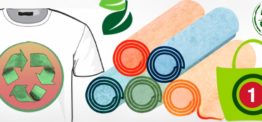
What to look and ask for when buying mixed plastic scrap bales (#1-7)
When analyzing photos and blends prior to purchasing mixed #1-7 plastic scrap material, it is important to have well documented expected percentages in the bales. As you might expect, just by the nature of mixed material, the bale composition is going to vary from bale to bale. But even with these inconsistencies between individual bales, overall the entire truck should have percentages of the various materials that average out to what the generator advertised and promised to deliver.
For instance, if the bales are advertised as 60% PET, 30% HDPE, and 10% #3-7, you should expect those percentages as an overall average for an entire 40,000 lb. truck load. To be fair, if the material is from a single stream and manually sorted you have to account for human error. Some bales will be on the lower end of the percentages and some will be higher. Ultimately, what will make any customer happy is a consistent blend and a fair market price.
We suggest to all our customers that if they’re working with a mixed plastic generator for the first time, be sure to take a trial load of mixed material before they commit to a longer term deal. Some people may think this is just throwing away guaranteed sales, but it’s better to take the proper precautions and “crawl before you walk,” so to speak.
If it turns out that a supplier cannot deliver the mixed bale consistency that you or your customer needs, it’s much worse to have to go back and cancel a large PO (thus ruining two relationships – one with your source, and one with your buyer). You want to make sure you can get the right blend of mixed material on a consistent basis, as promised, on time – before you invest a more substantial amount of time and money on buying mixed plastic scrap bales from that source. All parties should be in agreement going forward about the material and understand that the price should reflect some minor fluctuations at times.
Here are a few pointers for what to look for when buying mixed #1-7 plastic scrap bales:
- Beware of foreign material and objects: Just because it’s a “mixed bale” doesn’t mean the supplier is allowed to “mix in” anything they want. Watch out for tin, UBC, wood, large rubber products, cardboard, office or newspaper, food, medical supplies, toys, sporting equipment, furniture, film, trash bags, yard waste, clothing, etc. Basically, anything that’s not plastic should not be in the bales.
- “Think Clear:” When you’re evaluating photos of mixed #1-7 bales, always look for large amounts of #1 & #2 plastic. The rule of thumb is: the more clear material in the bales the better. Clear #1 and clear/natural #2 type plastic are always worth more than colored material. Ideally the plastic should be clean and clear – with not a lot of dirt or residue on the material. It’s a good sign if the material shows up shiny in photos; this means that the camera flash is reflecting nicely off the cleaner material. Another factor influencing the “clarity” of the plastic is the storage conditions. Ideally, material should be stored inside (away from moisture), and sorted quickly to prevent flies and bugs from contaminating the material in case there is any residue on the containers.
- Consistent size and shipping: Bale weight should be between 1000 lb (bare minimum) up to 2000 lbs. (maximum weight). Based on bale weight, you want to load 28-35 bales per truck. This ensures more efficient loading, shipping and unloading – which helps keep your costs down and profits up!
Dealing with mixed #1-7 bales of scrap plastic can present additional complexities and challenges, but ultimately if you know what to look for, you and your partners can achieve successful and profitable transactions. Over time, you will develop a better sense of which sources and suppliers can deliver what you need on a consistent basis.




